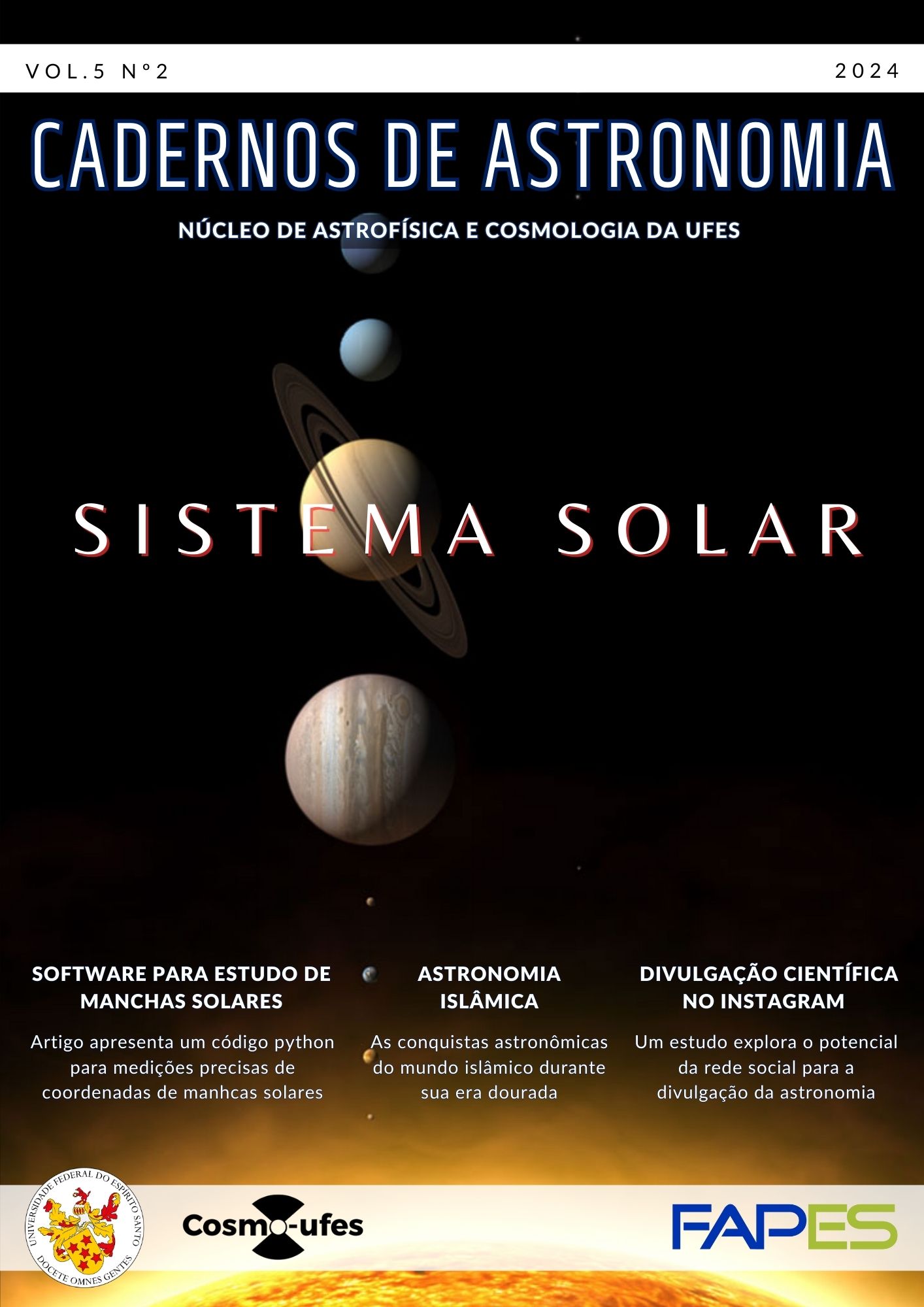OASI: um observatório dedicado aos pequenos corpos do Sistema Solar
DOI:
https://doi.org/10.47456/Cad.Astro.v5n2.45206Palavras-chave:
Sistema Solar, Astronomia Observacional, Observatório Nacional (Brasil)Resumo
Neste texto serão abordados as motivações e o processos de instalação e operação no Brasil de um observatório astronômico dedicado ao estudo de propriedades físicas de pequenos corpos do Sistema Solar. Da idealização da proposta, em 2005, até o pleno funcionamento do observatório, muitos desafios até então insuspeitados passaram a fazer parte das variáveis do projeto, extrapolando os limites técnico-científicos. Os resultados também vêm excedendo o esperado: além da boa produção acadêmica, em 13 anos de operação, o Observatório Astronômico do Sertão de Itaparica (OASI) mantém importantes colaborações com instituições de ensino e pesquisa da região Nordeste, buscando incluir a sociedade nos processos de pensar e fazer ciência.
Referências
P. Arcoverde et al., Physical properties of NEOs derived from their phase curves, Monthly Notices of the Royal Astronomical Society 523(1), 739 (2023).
T. Rodrigues, Espelho Cristalino: um observatório no Sertão de Itaparica (Observatório Nacional, Rio de Janeiro, 2022).
E. Rondón et al., OASI: A Brazilian Observatory Dedicated to the Study of Small So- lar System Bodies—Some Results on NEO’s Physical Properties, Publications of the Astronomical Society of the Pacific 132(1012), 065001 (2020).
E. Rondón et al., Photometric characterization of NEOs: 3 Amor and 3 Apollo, Monthly Notices of the Royal Astronomical Society 484(2), 2499 (2019).
IMPACTON, Iniciativa de Mapeamento e Pesquisa de Asteroides nas Cercanias da Terra no Observatório Nacional (© 2011). Disponível em http://impacton.on.br/, acesso em ago. 2024.
Downloads
Publicado
Edição
Seção
Licença
Copyright (c) 2024 Teresinha Rodrigues

Este trabalho está licenciado sob uma licença Creative Commons Attribution 4.0 International License.






